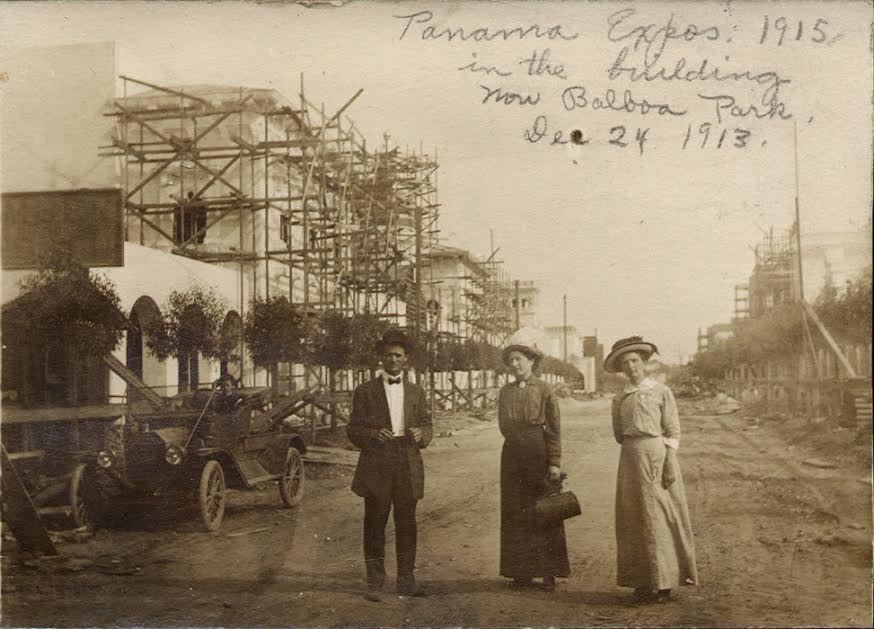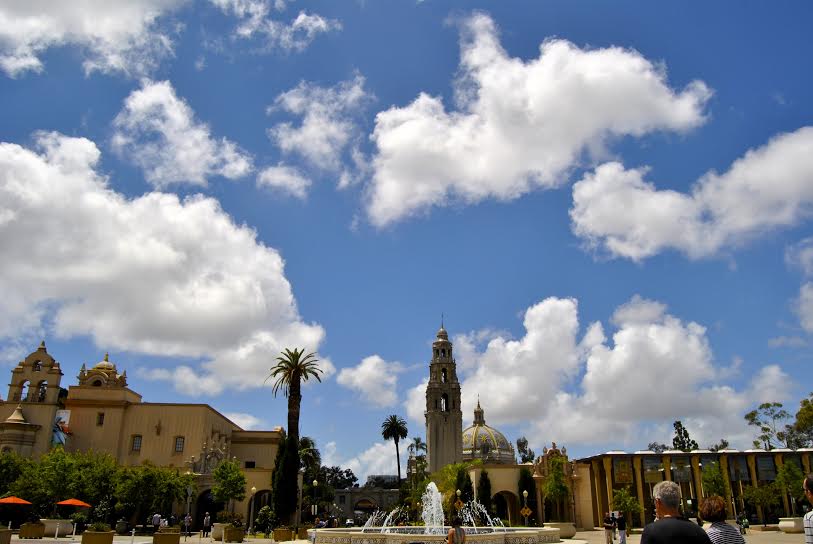

Tucked away from the metropolitan Gaslamp District is the world-renowned Balboa Park— a wide expanse of museums, gardens, expositions, cafes and the San Diego Zoo. Tourists, art students and native San Diegans alike flock to this epicenter that’s rich in history, culture and architecture. However, if you’re like me— a penniless college student desperately trying to escape the confines of school— Balboa Park can be both a blessing and a curse.
On the one hand, a sunny day at Balboa is a surreal escape from responsibility; the perfect haven to enjoy a picnic or stroll about the pathways decorated with flowers. But on the other hand, what was originally established as community space with a “free for all” mentality has since evolved into a commercialized mecca that pounces on any willing and open pocketbook. At this point, I stumbled upon what I’d like to call the “Balboa Park Paradox.” Beauty comes at a high price. Granted, Balboa Park is one of Southern California’s highly esteemed headquarters for art, but I’d appreciate the opportunity to enjoy it without worrying about losing an arm to pay for entry and then a leg to buy a postcard, not to mention the high price of food and drinks, which might cost you the other arm (and leg, depending on how hungry you are). So for financial reasons— and financial reasons only— I found myself limited in my experience here at Balboa Park.
Nonetheless, there is a plethora of free activities at this pricey park. For instance, take your picture in front of the Botanical Garden, otherwise seen as the “Taj Mahal” of Balboa Park, with its reflective pond filled with lilypads and koi fish mirroring a bird cage-like structure filled with lush greenery, ornate orchids and scented herbs.
And if you continue down Prado Walkway, you’ll be greeted with a variety of vendors, performers and musicians while listening to the exotic sounds of the pan flute.
All in all, Balboa Park is definitely a noteworthy must-see for college students, but be cautious of your curiosity because the fee can often be more than a quarter’s worth of textbooks. And hey, if all else fails, don’t lose heart— at least the parking is free.
History of the Park: Originally deemed “City Park” by its founding fathers in the early 20th century, what is now a meta-center of commercialized culture and marketable architecture was once a mere empty lot of land. It wasn’t until 1902 that the San Diego City Council allowed horticulturist Kate Sessions to adorn this barren area with a myriad of native and exotic plants so that City Park would be considered a botanical haven for residents. Prior to 1910, this “park” was not only viewed to have incredible potential, but was also exposed to its fair share of complicated financial agreements and ownership setbacks from profit-seekers and nature-lovers alike. Inevitably, large corporations would play a huge role in privatizing and advertising its aesthetic appeal. For instance, the Panama-California Exposition, meant to be held on the grounds of City Park, found that the name “City Park” was rather banal in comparison to its botanical beauty, and thus “Balboa Park” sprung to existence along with its commercial appeal. Despite its high rates of tourism and native appreciation, it was originally set aside for “pueblo squares” of public enjoyment, residential settlements, wildlife preservation, education development and a myriad of other uses. Although this park oversaw a time-consuming and legislatively burdening production process, and may have shifted from its original intent as a park for the people into a park profiting off the people, Balboa Park is still very much a gem that should not be readily passed by.
1915 Botanical Gardens
It’s free and you are surrounded by the glory of nature. What more could you ask for?
1915 Casa del Prado
Built for public use and aesthetic allure, Casa del Prado is nothing more than a beautiful — albeit barren — building. Situated near the heart of Balboa, this building is exceptionally eye-catching, but unless you’re planning on getting married or taking prom photos, there’s no need to go beyond the doors of this elaborate edifice.
1926 San Diego Museum of Art
While this is not a free attraction, the expositions reach all corners of the earth and legitimize the reasoning behind Balboa Park’s label as the “Smithsonian of the West.”
1935 Spanish Village Art Center
This thriving and bustling hodgepodge of native artists is truly something to revel in. Consisting of an array of artisanal arts and crafts, it’s a treasure chest of Spanish culture.
1978 Museum of Man
This is a toss-up. Unless you are interested in the history of torture and medieval instruments of agony, it’s best to stay away. But then again, the social and cultural message of this museum is not to be overlooked.
1990 Japanese Friendship Gardens
Despite having to pay a small entry fee, the overall aesthetic and tribute to Zen landscaping is not to be missed.
Restaurants
Let’s be honest, the food here is just as expensive as a corndog at Disneyland. Bring a thermos of your own Folger’s coffee and a picnic basket instead of spending an obscene amount of cash. You’ll feel much better basking in the sun if you don’t have to spend $50 on a salad.
Sixth and Upas Trails
While this is definitely a perfect destination for hardcore hiking fanatics, for a self-proclaimed sloth, this might be the one time straying from the path is a good idea. From steep inclines to rocky passages and tricky navigation, this attraction might not be for everyone.
Future of the Park: Many believe that the park won’t last much longer purely off stagnant relics of art pieces from a time gone by. But fear not, Balboa Park is no fool. With upcoming attractions such as “The Future of Balboa” housed in the San Diego Automotive Museum, this park not only pays homage to the past, but offers a glimpse into the future with exhibitions of robotic machines and advanced automobiles. While the society around this historic park may change, Balboa always finds a way to be one step ahead.







